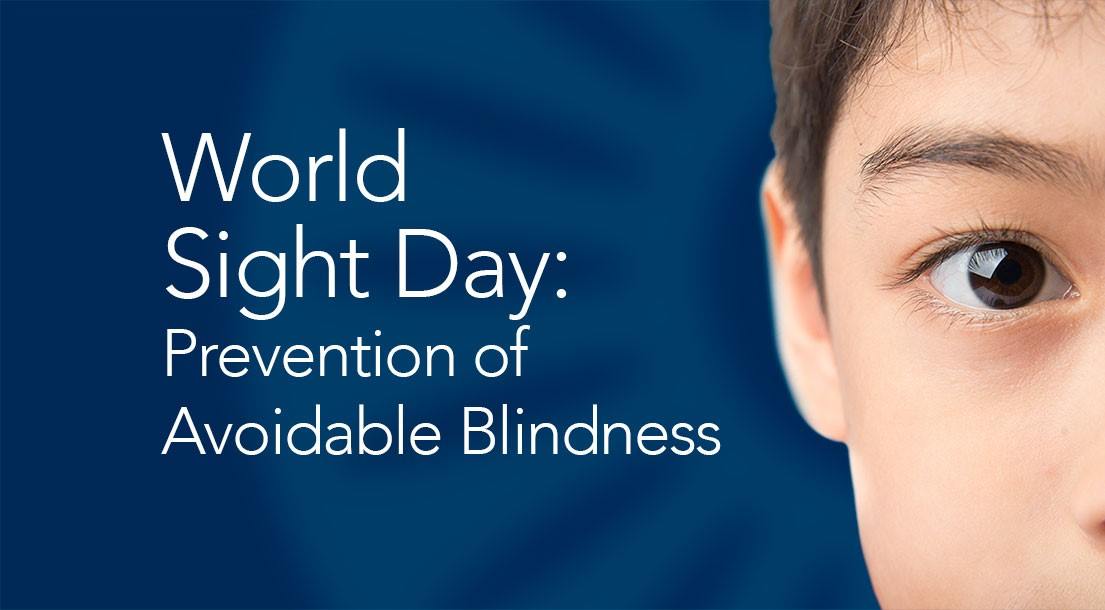Little Attention Can Prevent Vision Impairment and Blindness
World sight day will be observed on 8th October, 2020, with the theme “Hope In Sight”, to focus global attention on vision impairment and blindness.
According to WHO, blindness and vision impairment affect at least 2.2 billion people around the world. Of those, around 1 billion have preventable vision impairment or one that has yet to be addressed. According the WHO data, most common cause of blindness is uncorrected Refractive errors and other causes include Cataract, Trachoma, Trauma to the eyes, Diabetic changes in the eyes, Glaucoma, Age-Related Macular Degeneration. Most of them are preventable and key is regular routine detailed eye examination including retina/fundus examination.
According to WHO, the majority of people with vision impairment are over the age of 50 years; however, vision loss can affect people of all ages. Blindness and vision loss are more prevalent with people in low- and middle-income countries where accessibility and specific government services may be lacking.
Indian Scenario
Reduced or absent eyesight can have major and long-lasting effects on all aspects of life, including daily personal activities, interacting with the community, school and work opportunities and the ability to access public services. It is of immense concern that almost half of the world’s blind population resides in India.
According to a National Blindness & Visual Impairment Survey 2015-19 conducted by Dr Rajendra Prasad Institute of Opthomological Sciences, AIIMS, Delhi as part of National Program for Control of Blindness & Visual Impairment, Government of India, it is found that Out of 93,108 enumerated individuals with aged > 50 years in 31 districts, 85,135 persons were examined with an overall response rate of 91.5%. The estimated prevalence of blindness was 1.99%, Severe Visual Impairment (SVI) 1.96%, Mild Visual Impairment (MVI) 9.81%, Early Visual Impairment (EVI) 12.92%, Moderate Severe Visual Impairment (MSVI) 11.77% and Visual Impairment (VI) 13.76%. Prevalence of functional low vision was 1.03% and that of blindness<3/60 (using pinhole) was 1.75%.
Maximum prevalence of blindness was seen in 80+ age group (11.6%), followed by 70-79 age group (4.1%), 60-69 age group (1.6%) and 50-59 age group (0.5%). Blindness was higher among illiterates (3.23%) compared to literate population. It was only 0.43% among 10th pass and above. Blindness was more prevalent in the rural population as compared to urban population. 2.14% vs 1.80%. The prevalence of visual impairment was 4.43 per thousand and blindness was 0.52 per thousand in the 0-49 year age group.
Estimated prevalence in overall population of blindness was 0.36%, severe visual impairment was 0.35%, moderate visual impairment was 1.84% and early visual impairment was 2.92%. Estimated mod-erate severe visual impairment in overall population was 2.19% and that of visual impairment was 2.55%. Estimated prevalence of pinhole blindness in overall population of India was 0.32%.
Causes of blindness and visual impairment in India
According to a National Blindness & Visual Impairment Survey 2015-19 conducted by Dr Rajendra Prasad Institute of Opthomological Sciences, AIIMS, Delhi as part of National Program for Control of Blindness & Visual Impairment, Government of India, Cataract continue to be the major cause of blindness and responsible for 66.2% of blindness, severe visual impairment (80.7%), and moderate visual impairment (70.2%). Refractive error was the most important cause of visual impairment and second important cause of blindness in 2001 but the current survey showed that refractive error is not an important cause of blindness. Corneal blindness emerged as the second important cause of blindness. Beside this, the proportions of blindness due to complications of cataract surgery have also increased.
The other important causes of blindness were corneal opacity (7.4%), cataract surgical complications (7.2%), posterior segment disorders excluding Diabetic retinopathy (DR) and AGE RELATED MACULAR DEGENERATION (ARMD) (5.9%) and glaucoma (5.5%). Principal causes of severe visual impairment other than cataract were cataract surgical complications (8.3%) and other posterior segment diseases excluding Diabetic retinopathy (DR) and AGE RELATED MACULAR DEGENERATION (ARMD) (3.4%). For early visual impairment, the most important cause was refractive error (70.6%)
Causes of blindness and visual impairment in population aged 0-49 years were due to non-trachomatous corneal blindness (37.5%). Most important causes of VI were refractive error (29.6%), untreated cataract (25.4%), all globe/ CNS abnormality (15.5%), and non-trachomatous corneal opacity (14.1%).
Treatment Options
Treatment for vision impairment depends on the extent of the vision loss and the cause. Following points are very important not only to find the cause but also to prevent further damage and treat according to the cause of vision impairment-
- Regular eye check after age of 40 years especially Diabetics
- Routine detailed eye examination for children, before entering school to rule out Refractive Error by an Ophthalmologist
- If you have family history of Glaucoma, then routine check up every yearly after age of 35
Based upon the examination results, your ophthalmologist will suggest various treatment options that include surgery, glasses, medicines etc.
Prevention is better than Cure:
It is always said that prevention is better than cure. The following actions can prevent problems of Visual Impairment…
- Eat healthy
- Wear good quality sunglasses whenever outdoor to protect eyes from exposing to ultraviolet radiation
- Wear safety/protective tools during hazardous work
- Maintain proper hygiene
- Regularly exercise and exposure to sunlight
- Avoid smoking, alcohol and use of illegal drugs
- Avoid over the counter medications for the eye problems
Government’s role is to provide checkup facilities, also to collaborate and promote all activities which spread awareness about prevention of blindness and also provides facilities to correct blindness.
It is also important to create awareness about donating eyes. Because it can help to give eye sight to lakhs of people who are completely blind. So Pledge your eyes- Give the gift of vision is also an important activity that needs to undertaken in large numbers.
This World Sight Day, let’s find the solutions to ensure that everyone, everywhere has access to sight. Let’s pledge to spread the message of #HopeInSight.
——————————————————————————————————————————————————–

The Article is prepared by Dr. Alpa Atul Poorabia, Consultant, Ophthalmologist, Apollo Spectra Hospitals, Kondapur, Hyderabad







Comment here